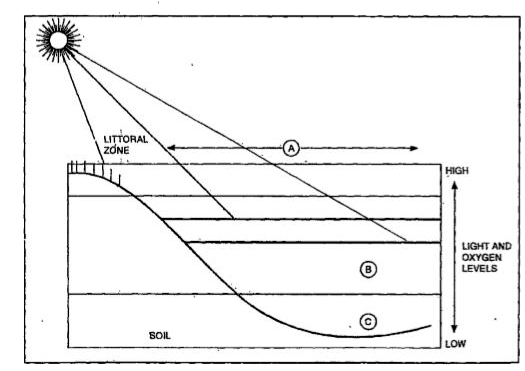What are adaptations ? Describe the various adaptations plants to aquatic environment. Solution in Punjabi
Adaptation. N/A
Plant Adaptations to Aquatic Environment-Hydrophytes. Hydrophytes are of five types: submerged, suspended, free floating, floating leaved anchored and emergent hydrophytes. They possess special characteristics, (i) Mucilage. Hydrophytes are covered with mucilage which protects them from epiphytes, pathogens and animals. It also functions as lubricant, (ii) Roots. They are absent (e.g., Utricularia, Wolffia), poorly developed (e.g., Hydrilla, Vallisneria) or used for balancing (e.g., Lemna, Pistia, Eichhornia). Root hairs are absent or very few. Root caps are replaced by root pockets, (iii) Mechanical Tissue. It is absent, (iv) Xylem. It is poorly developed or absent, (v) Aerenchyma. Hydrophytes possess special air storage parenchyma called aerenchyma. It makes their different parts light, spongy and flexible. O2, produced during photosynthesis, becomes available to roots and other nonphotosynthetic regions. It can also help in exchange of gases with the atmosphere through stomata present in emerged regions, (vi) Inflated Organs. Special air storing organs occur in floating plants, e.gi, roots in Ludwigia and petioles in Eichhornia. (vii) Leaves. Submerged leaves are thin, small, linear or finely dissected. Floating leaves are large, having stomata and waxy coating on the upper surface. Plants with both submerged and floating or emerged leaves show heterophylly or occurrence of more than one type of leaves, e.g., Ranunculus aquatilis, Sagittaria.
Topper's Solved these Questions
- ORGANISMS AND POPULATIONSBook:BETTER CHOICE PUBLICATIONChapter:ORGANISMS AND POPULATIONSExercise:LONG ANSWER TYPE QUESTIONS (MOST EXPECTED QUESTIONS)
Explore 7 Videos
- ORGANISMS AND POPULATIONSBook:BETTER CHOICE PUBLICATIONChapter:ORGANISMS AND POPULATIONSExercise:SHORT ANSWER TYPE QUESTIONS (MOST EXPECTED QUESTIONS)
Explore 20 Videos
- MOLECULAR BASIS OF INHERITANCEBook:BETTER CHOICE PUBLICATIONChapter:MOLECULAR BASIS OF INHERITANCEExercise:MOST EXPECTED QUESTIONS
Explore 36 Videos
- PRINCIPLES AND PROCESSES IN BIOTECHNOLOGY Book:BETTER CHOICE PUBLICATIONChapter:PRINCIPLES AND PROCESSES IN BIOTECHNOLOGY Exercise:LONG ANSWER TYPE QUESTIONS
Explore 16 Videos
Similar Questions
The figure shows zones in the lake.

(i) Label the three zones of the lake A, B and C.
(ii) List the gradients which determine zones in the lake from water surface to bottom of lake.
View SolutionDefine competition and explain competitive release with suitable example.
View SolutionDefine genetic code.
View SolutionWhat is recombinant DNA technology? Explain in brief the various steps in the process of recombinant DNA technology.
View Solutionपौधों में जड़ों के कार्य का वर्णन कीजिए और उनके विभिन्न रूपान्तरणों का सचित्र वर्णन कीजिए ।
View Solutionजलीय पौधों के आकारिकीय अनुकूलन लिखिए
View Solutionजलीय पौधों में पाये जाने वाले किन्हीं चार प्रकार्यात्मक अनुकूलनों का वर्णन कीजिये।
View Solutionमैंगूव पौधे क्या हैं ? इनमें पाये जाने वाले विभिन्न प्रकार के अनुकूलनों का वर्णन कीजिये।
View SolutionList out the adaptation of fish to survive in aquatic environment.
View Solutionअनुकूलन से आप क्या समझते हैं ? जलीय जीवों (पौधे तथा जन्तु दोनों) के अनुकूलन का वर्णन करें।
View SolutionWhat are adaptations ? Describe the various adaptations plants to aquatic environment.
View SolutionWhat are adaptations? Describe the various ecological adaptations in different organisms.
View Solutionহাইড্রোফাইট বা জলে অভিযোজিত উদ্ভিদের অভিযোজন লেখো।
View SolutionDescribe the adaptations in aquatic plant water.
View SolutionWhat adaptations are found in plants that grow in aquatic environments?
View SolutionWhat are the general aquatic adaptation in animals and plants ?
View Solution

